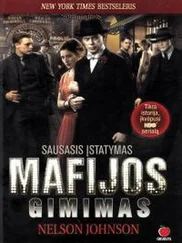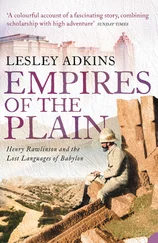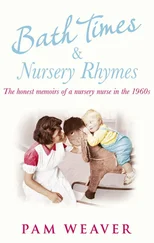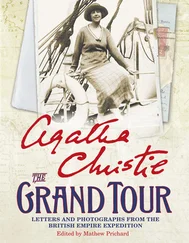Nelson Johnson - Boardwalk Empire - The Birth, High Times, and Corruption of Atlantic City
Здесь есть возможность читать онлайн «Nelson Johnson - Boardwalk Empire - The Birth, High Times, and Corruption of Atlantic City» весь текст электронной книги совершенно бесплатно (целиком полную версию без сокращений). В некоторых случаях можно слушать аудио, скачать через торрент в формате fb2 и присутствует краткое содержание. Жанр: Старинная литература, на английском языке. Описание произведения, (предисловие) а так же отзывы посетителей доступны на портале библиотеки ЛибКат.
- Название:Boardwalk Empire: The Birth, High Times, and Corruption of Atlantic City
- Автор:
- Жанр:
- Год:неизвестен
- ISBN:нет данных
- Рейтинг книги:5 / 5. Голосов: 1
-
Избранное:Добавить в избранное
- Отзывы:
-
Ваша оценка:
- 100
- 1
- 2
- 3
- 4
- 5
Boardwalk Empire: The Birth, High Times, and Corruption of Atlantic City: краткое содержание, описание и аннотация
Предлагаем к чтению аннотацию, описание, краткое содержание или предисловие (зависит от того, что написал сам автор книги «Boardwalk Empire: The Birth, High Times, and Corruption of Atlantic City»). Если вы не нашли необходимую информацию о книге — напишите в комментариях, мы постараемся отыскать её.
Boardwalk Empire: The Birth, High Times, and Corruption of Atlantic City — читать онлайн бесплатно полную книгу (весь текст) целиком
Ниже представлен текст книги, разбитый по страницам. Система сохранения места последней прочитанной страницы, позволяет с удобством читать онлайн бесплатно книгу «Boardwalk Empire: The Birth, High Times, and Corruption of Atlantic City», без необходимости каждый раз заново искать на чём Вы остановились. Поставьте закладку, и сможете в любой момент перейти на страницу, на которой закончили чтение.
Интервал:
Закладка:
One of the gimmicks used to lure visitors was to continue touting the resort as a health spa, with Pitney’s original promotional efforts evolving into pamphlets distributed by the railroads. Exaggerated claims of the health benefits of Absecon Island’s environment were an important part of selling Atlantic City to both Philadelphia and the nation. After Pitney died, the railroads hired other “distinguished men of medicine” who continued the tradition. These doctors were paid to make written endorsements and to prescribe a stay at the beach as the cure for every ailment. The railroads supplied the doctors with complimentary passes, which were passed on to those patients who had yet to visit the resort. Handouts published at the expense of the railroad distributed this medical advice to the general public and invariably described the resort’s air as “hostile to physical debility.”
There were no limits to the hype. “Next to being an inhabitant of Atlantic City, it must be one’s highest privilege to find rest, health and pleasure at the City by the Sea.” A favorite subject of the railroads’ doctors was ozone, “the stimulating, vitalizing principal of the atmosphere,” which was in large supply only at the seashore, especially Atlantic City. According to the railroads’ pamphlets, “Ozone has a tonic, healing, purifying power, that increases as the air is taken into the lungs. It strengthens the respiratory organs, and in stimulating them, helps the whole system.” But that wasn’t all. By breathing Atlantic City’s air, “It follows naturally that the blood is cleansed and revived, tone is given to the stomach, the liver is excited to healthful action and the whole body feels the benefit. Perfect health is the inevitable result.”
In addition to the pamphlets cranked out by the railroads, there were a series of travelers’ handbooks published from 1887 to 1908 by Alfred M. Heston, a self-appointed cheerleader for the resort. Heston was well-educated and had worked for several newspapers prior to making Atlantic City his home. An owlish, scrawny little man, Heston’s appearance was marked by pince-nez eyeglasses and a closely groomed mustache. Somewhat eccentric, he was drawn to the study of ancient civilizations and progressive Republican politics. Heston was the editor of a local newspaper, the Atlantic City Review , and served as city comptroller from 1895 to 1912. His annual handbooks described a life of enchantment waiting for all who came to Atlantic City. They were filled with sketches of charming scenes of vacationers, hotel listings, recommended merchants and restaurants, activities for the family, and romantic little tales all intended to present Atlantic City to the world through rose-colored glasses. According to Heston, “The endless panorama of life upon the water, the strand, and the Boardwalk, constantly in motion and ever changing” made Atlantic City the “queen of watering places.”
Heston used his contacts in the publishing world to have his handbooks reviewed and publicized in major newspapers of the day while the railroad subsidized and circulated them. A traveler waiting for a train in Boston, Pittsburgh, Chicago, or in nearly any of the thousands of railroad stations throughout the United States could always find a free copy of the Heston handbook.
As the resort grew in popularity, one of the main themes of its promoters was to dispel the belief that Atlantic City was attractive only in the summer. Not everyone was like Walt Whitman, who found that Atlantic City “suits me just as well, perhaps best, for winter quarters.” Whitman enjoyed riding in a horse-drawn carriage along the beach and in January 1879 wrote to a friend, “I have a fine and bracing drive along the smooth sand (the carriage wheels hardly make a dent in it). The bright sun, the sparkling waves, the foam, the view—the vital vast monotonous sea … were the items of my drive … How the soul dwells on their simplicity, eternity, grimness, absence of art!”
But Whitman’s prose attracted few wintertime visitors, so the railroad’s publicity agents conjured up another law of nature to convince vacationers that Atlantic City had mild winters. Promotional literature claimed that the warm Gulf Stream, coursing its way northward, made a westerly turn just beyond Cape May and swept within a few miles of the stretch of the Jersey coast where Absecon Island was located. The Gulf Stream then, as if guided by an unseen hand, turned out to the sea on its way to the frozen North, thus preventing any other northeastern seacoast town from receiving its warmth. As one early publicist later admitted, “During blizzards or just plain snowstorms, we plastered the metropolitan dailies with No snow on the Boardwalk even though sometimes we had to sweep it off before placing the copy.”
The Boardwalk, which began as a way to keep the tourists from tracking beach sand all over town, was another marketing tool for the railroads and local merchants. Without any idea of what they were doing, Jacob Keim, a hotelier, and Alexander Boardman, a train conductor—both of whom were annoyed with the sand brought indoors by their patrons—created a novelty that would in time win hundreds of thousands of new converts for Atlantic City. In the spring of 1870, Keim and Boardman called a meeting of other business people at Keim’s hotel, the Chester County House. Boardman opened the meeting by stating:Gentlemen, we brought you here to present an idea we feel will benefit everyone in this room. Our visitors are no longer satisfied with the rough facilities once offered them here. Today we must supply fine carpets, good furniture and other luxuries. These cost money. Our carpets and even stuffed chairs are being ruined by the sand tracked into our places from the beach. Walking on the beach is a favorite past time. We can’t stop this. We propose to give the beach strollers a walkway of boards on the sand, which we believe will overcome our sand problems.
Keim and Boardman presented sketches of their idea and a petition to city council was circulated. It was an easy sell. The first Boardwalk was a flimsy structure, eight-foot wide, in 12-foot sections, so it could be taken up and stored at the end of summer. Extending from the Seaview Excursion House to the Absecon Lighthouse, it turned “tiresome areas of mosquito marsh and soft sand” into a crowded little thoroughfare of tourists eager to prance upon every plank. Stretched out across the dunes, filled with people scurrying about, this little promenade must have been a curious sight.
At the time the Boardwalk was originally built, city council adopted an ordinance prohibiting the construction of any buildings within 30 feet of the walkway on the city side, and prohibited construction entirely on the ocean side. By 1880, after the success of the second railroad was evident, local businessmen saw the potential for locating shops along the Boardwalk. Property owners near the walkway pressured council to reverse itself to make retail shops available to the strollers. In less than three years after the ordinance was rescinded, the Boardwalk became a busy street with more than 100 businesses facing the beach. As demand for access to the Boardwalk increased it was improved, becoming more elaborate and permanent. In 1884 it was elevated to get it off the sand and moved closer to the shoreline. In 1896, the city made a major commitment, constructing a Boardwalk that rested upon steel pilings driven into the beach sand. After 1896, the Boardwalk was truly a “grand promenade,” with nothing like it anywhere in the world. By the end of the 19th century, the Boardwalk was a major attraction unto itself, with many visitors coming to the resort for the first time just to walk on it. There was something magical about being so near the sand and water, yet removed from it, that captured the public’s imagination.
Читать дальшеИнтервал:
Закладка:
Похожие книги на «Boardwalk Empire: The Birth, High Times, and Corruption of Atlantic City»
Представляем Вашему вниманию похожие книги на «Boardwalk Empire: The Birth, High Times, and Corruption of Atlantic City» списком для выбора. Мы отобрали схожую по названию и смыслу литературу в надежде предоставить читателям больше вариантов отыскать новые, интересные, ещё непрочитанные произведения.
Обсуждение, отзывы о книге «Boardwalk Empire: The Birth, High Times, and Corruption of Atlantic City» и просто собственные мнения читателей. Оставьте ваши комментарии, напишите, что Вы думаете о произведении, его смысле или главных героях. Укажите что конкретно понравилось, а что нет, и почему Вы так считаете.












